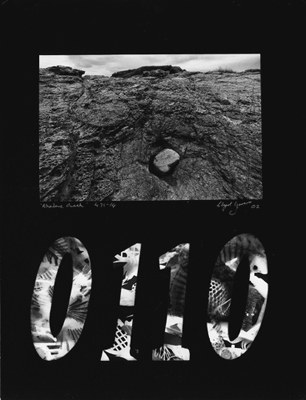Often photograms are referred
to as having ghost like qualities, ( Adam Fuss worked on a series
titled My Ghost) qualities that dematerialize the most tangible of
objects, strip them down to a new essential. Man Ray likened the enigmatic
quality of the photogram to the dreams of objects. Like X-ray vision,
emanations of light, they have the ability to reference objects in
a manner that our refined visual senses can not, to record planes
of existence beyond our normal experience. To teach us a new way of
seeing, they can strip an abject to its skeleton, down to its bones.
While there is the potential for both abstraction and representation
when making any photogram how much one leans one way or the other
is a personal choice. Images can be made that are so they leave some
recognizable trace of the object, or there is total abstraction and
no semblance of the object.
The recognition of any representation of an object or any part of
an object in a photogram is loaded with meaning. How loaded that becomes
depends upon the object and the context in which it is placed. Adam
Fuss's photograms of dead rabbits with their entrails strewn across
the image is an example. Once we understand what the object is on
the paper we read it in an emotive manner.
Not all objects evoke such
an emotive response, and while a viewer can be left to their own devices,
there are various strategies that can be used to suggest meaning in
the work.
Title
This
photogram image from Aporian Emulsions where the emulsion was
painted in the arrow motif on the paper, was titled
St
Sebastian's Arrows. While it is loaded with religious meaning
it is actually about the environment. It suggests the earth
is a body that we shoot arrows, drive nails etc into. |
 |
Text
etc. combined as part of the image
The
final images from the Adze to Coda series incorporated binary
code (1&0) photograms as a reference to the contemporary
tools of our age. The Numbers were simply cut out from cardboard. |
 |